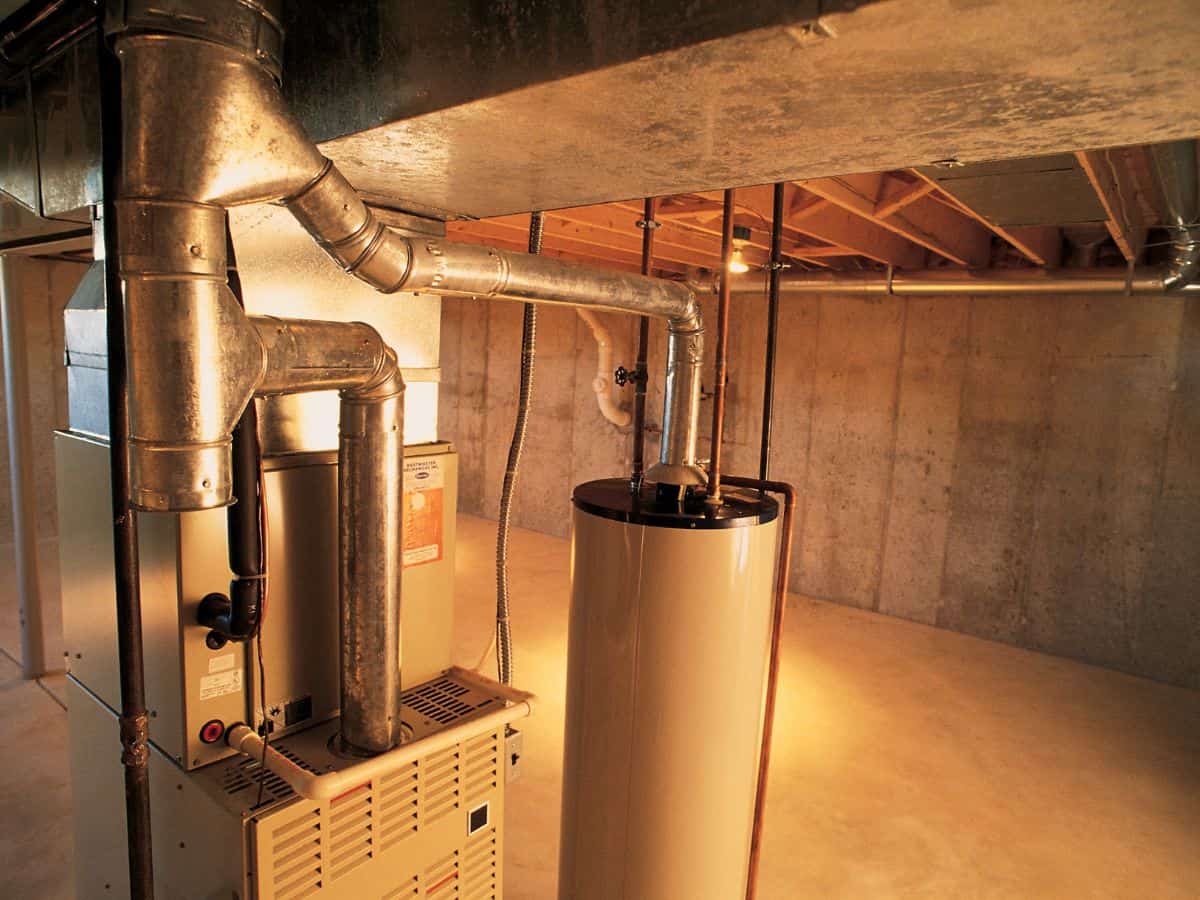Ever stared at the numbers on your heating bill and wondered how many watts your furnace actually consumes? Today, we’re turning up the heat and answering this burning question.
In simple terms, furnace wattage represents how much power your furnace uses to operate. It directly impacts your energy consumption, and understanding it can be a game-changer in managing those winter energy bills.
Read below for more on calculating your power consumption and making your heating system more efficient.
Understanding furnace wattage
When we talk about wattage, we’re referring to the amount of electrical power your furnace gobbles up to keep you warm. The higher the wattage, the more power it requires.
The connection to energy efficiency
When it comes to technology, wattage doesn’t work alone. It’s typically found in cahoots with its friend energy efficiency.
Energy efficiency ratings, like AFUE (Annual Fuel Utilization Efficiency) or HSPF (Heating Seasonal Performance Factor), indicate how much of the power consumed by your furnace gets converted into heat for your home. Higher efficiency means less waste and lower energy bills.
Electric vs gas furnace: Which one uses more power?
Each furnace dines differently on power, depending on its make and model. Many homeowners are curious about which furnace type will cost more in the long run.
On average, electric furnaces use anywhere from 10,000 to 50,000 watts (10 to 50 kilowatts). This is a fairly high number, but it’s worth noting that electric furnaces convert nearly all the energy into heat, resulting in an AFUE rating close to 100%.
In contrast, even the most efficient gas furnaces seldom exceed an AFUE of 97% due to the heat lost through venting.
Do gas furnaces use electricity?
Yes, gas furnaces will use a small amount of electricity to ignite. This is usually about 600 watts, on average. Generally speaking, gas furnaces are often the more energy-efficient option, especially in colder climates, due to their ability to produce greater amounts of heat for the same amount of fuel consumed.
Not sure which is cheaper? Consider the fuel prices in your region. This will give you a better estimate of which system will be cheaper. Most power stations generate electricity through either coal (thermal) or renewable energy resources, like water (hydro), sun (solar energy), or wind power.
To bring the electricity costs down, many property owners install photovoltaic (solar power) systems.
Choosing the right furnace for your property is always best with a little help. Contact our office for more advice or assistance. We’re here to help keep our community warm, one furnace at a time!
Factors affecting the number of watts a furnace uses
A few things can affect how much power your furnace uses to heat your home. Here’s a look at them:
Heating capacity and efficiency
Just like how a bigger car guzzles more fuel, a stronger furnace with a greater heating capacity will consume more power.
However, its efficiency plays a role, too. Though pricier initially, a high-efficiency furnace can save you money in the long run. Consider your fuel type – due to the combustion process, fossil-fuel-burning furnaces (oil and gas) naturally produce more heat with less energy than their electric counterparts.
Thermostat settings and the size of your living space
The higher you set your thermostat, the harder your furnace works and the more watts it uses. Think of it like a treadmill – the faster you set the pace, the harder you have to work, and the more energy you use.
How large is the space you want to heat up? If you live in a small apartment, your system likely won’t have to work as much as if you lived in a large house with several stories and rooms.
Insulation
Good insulation keeps heat inside and cold outside, so your furnace won’t have to work as hard/consume as much power to maintain the temperature. Also, this is great to keep your home cool in the summertime!
Climate conditions
The United States has a variety of different climates. In milder regions, like Arizona, furnaces don’t use as much power to achieve the same results.
Need advice? Contact the team at River Valley Air Conditioning. We’re familiar with HVAC systems and state policy – we’ll provide you with tailored advice for your needs.
Calculating your furnace’s wattage
Here’s a throwback to science class! While it might seem complicated at first, the calculation is relatively straightforward once you get the hang of it. Here are some definitions:
- Amps: This measures the flow rate of the electrical current. If electricity was water, it would be like how much water flows through a hose or pipe.
- Volts: Voltage is a measure of force, or how much force/pressure is pushing the electric current.
- Watts: How much power a device consumes to complete its designed task. (i.e., 40 watts to light a lightbulb). Larger appliances are usually measured in kilowatts, equal to 1000 watts.
Here’s how to calculate wattage:
Step #1 – Identify the Amps and Volts: Check the data plate on your furnace for its electrical specifications, looking specifically for its current in amperes and operating voltage. Most US homes have voltages of either 120 or 240v (240 is typically for larger appliances).
Step #2 – Use the Formula: Power (P) in watts equals the current (I) measured in amps, multiplied by the voltage (V). In simple terms: P = I x V.
Here’s an example:
So, say a furnace operates at 240 volts and draws 14 amperes of electric current:
240 V x 14 A = 3,360 W
This furnace would have a wattage of 3,360 watts or 3.36 kilowatts.
Step #3 – Note the Efficiency Rate: Remember that the furnace’s efficiency rate (AFUE) influences actual power consumption. If the furnace has an AFUE of 95%, only 95% of the electricity is converted into heat, with the remaining 5% wasted.
If you’re not comfortable doing this, it’s okay! That’s why you have technicians to help out. Contact one of our HVAC technicians and we’ll take a look at your current system to let you know how much energy it’s using.
How to reduce the amount of watts my home uses: Efficiency tips
Noticing some signs of high bills? To optimize your home’s power consumption and energy cost, consider these tips:
- Regular Maintenance: Furnaces (especially gas furnaces) need regular upkeep and cleaning to maintain optimal performance. Regular check-ups can help spot issues early and keep the system running efficiently.
- Insulation & Thermostat Settings: Adequate insulation and thermostat adjustments can effectively conserve energy.
- Upgrade Your Furnace: Replacing an old furnace with an energy-efficient model can significantly decrease energy use and your carbon footprint. Consider this as part of a renovation project.
- Involve Your Family: Educate family members to adopt energy-saving habits like turning off lights when not in use.
- Renewable Energy: Consider using natural resources like solar or geothermal systems for more efficiency and less pollution.
Remember, every little effort towards energy efficiency helps chop your utility bills and contributes to a healthier environment by limiting greenhouse gas emissions.
The best HVAC services for our community since 1955.
If you need help choosing the right system for your home, it’s best to ask the professionals. Here at River Valley, we specialize in all things HVAC to help you get the best system for your comfort and money.
If you want more information on heating system installation, maintenance or repair, energy-saving tips, or government rebate programs, give us a call.
Contact River Valley for all your heating and cooling needs.

